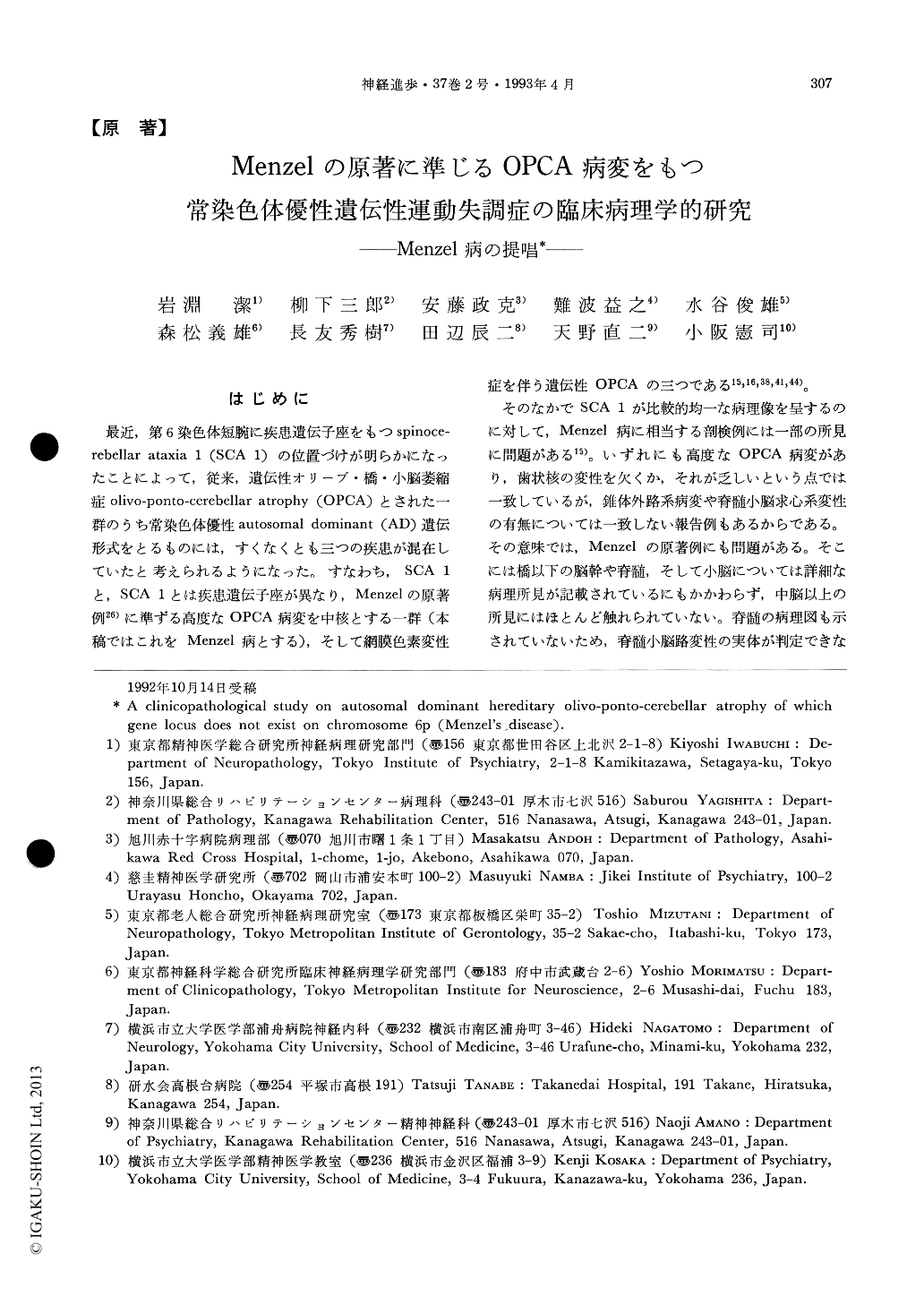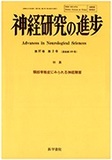Japanese
English
- 有料閲覧
- Abstract 文献概要
- 1ページ目 Look Inside
はじめに
最近,第6染色体短腕に疾患遣伝子座をもつspinoce-rebellar ataxia 1(SCA 1)の位置づけが明らかになったことによって,従来,遺伝性オリーブ・橋・小脳萎縮症olivo-ponto-cerebellar atrophy(OPCA)とされた一群のうち常染色体優性autosomal dominant(AD)遺伝形式をとるものには,すくなくとも三つの疾患が混在していたと考えられるようになった。すなわち,SCA 1と,SCA 1とは疾患遺伝子座が異なり,Menzelの原著例26)に準ずる高度なOPCA病変を中核とする一群(本稿ではこれをMenzel病とする),そして網膜色素変性症を伴う遺伝性OPCAの三つである15,16,38,41,44)。
そのなかでSCA1が比較的均一な病理像を呈するのに対して,Menzel病に相当する剖検例には一部の所見に問題がある15)。いずれにも高度なOPCA病変があり,歯状核の変性を欠くか,それが乏しいという点では一致しているが,錐体外路系病変や脊髄小脳求心系変性の有無については一致しない報告例もあるからである。その意味では,Menzclの原著例にも問題がある。そこには橋以下の脳幹や脊髄,そして小脳については詳細な病理所見が記載されているにもかかわらず,中脳以上の所見にはほとんど触れられていない。
Recent advances in neurology have revealed three different diseases in dominant hereditary olivo-ponto-cerebellar atrophy (OPCA). They are spinocerebellar ataxia 1 (SCA 1) in which the gene locus is located in the short arm of chromosome 6, Menzel's disease in which degeneration in the olivo-ponto-cerebellar (OPC) system is identical with that of Menzel's original case in 1891, and hereditary OPCA with retinal degeneration.
We examined nine autopsied Japanese cases of Menzel's disease from seven families. Their age at onset ranged from 17 to 37 years old.

Copyright © 1993, Igaku-Shoin Ltd. All rights reserved.


